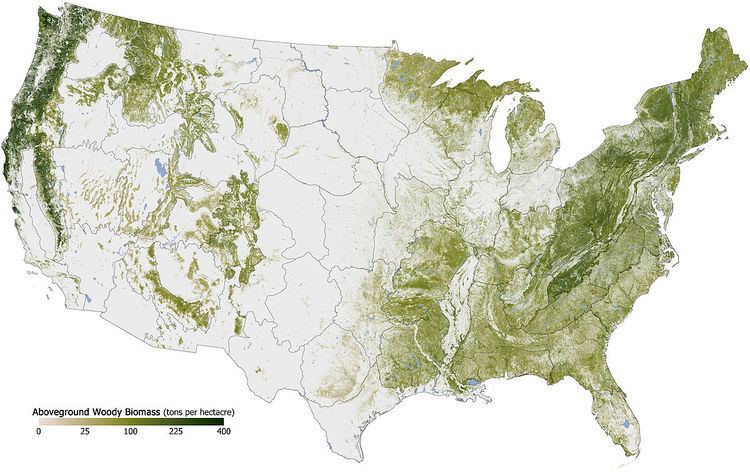 | ||
Forest cover by state is estimated from tree-attributes using the basic statistics reported by the Forest Inventory and Analysis (FIA) Program of the U.S. Department of Agriculture Forest Service (FIA). Tree volumes and weights are not directly measured in the field, but computed from other variables that can be measured.
This is only the total amount of timberland, the actual forest cover for each state may be significantly higher.
- Maine: 89%
- New Hampshire: 84.9
- West Virginia: 77.2%
- Vermont: 75.7%
- Alabama: 70.6%
- Georgia: 64.2%
- South Carolina: 63.8%
- Mississippi: 61.9%
- Virginia: 60.7%
- North Carolina: 59.9%
- Pennsylvania: 55.3%
- Arkansas: 55.1%
- Connecticut: 54.7%
- Tennessee: 52.9%
- Massachusetts: 52.5%
- Michigan: 51.2%
- New York: 50.9%
- Rhode Island: 50.8%
- Louisiana: 49.2%
- Kentucky: 48.6%
- Wisconsin: 45.2%
- Florida: 42.4%
- Washington: 40.7%
- New Jersey: 39.5%
- Oregon: 38.8%
- Maryland: 37.9%
- Idaho: 31.8%
- Alaska: 30.4%
- Missouri: 30.3%
- Delaware: 30.0%
- Minnesota: 28.9%
- Ohio: 28.9%
- Montana: 20.6%
- Indiana: 18.9%
- California: 17.8%
- Colorado: 17.5%
- Hawaii: 17.0%
- Oklahoma: 14.2%
- Illinois: 11.5%
- Wyoming: 9.2%
- Utah: 8.9%
- Texas: 7.0%
- New Mexico: 5.6%
- Iowa: 5.4%
- Arizona: 4.8%
- South Dakota: 3.1%
- Kansas: 2.8%
- Nebraska: 1.8%
- North Dakota: 1.0%
- Nevada: 0.5%
References
Forest cover by state in the United States Wikipedia(Text) CC BY-SA
